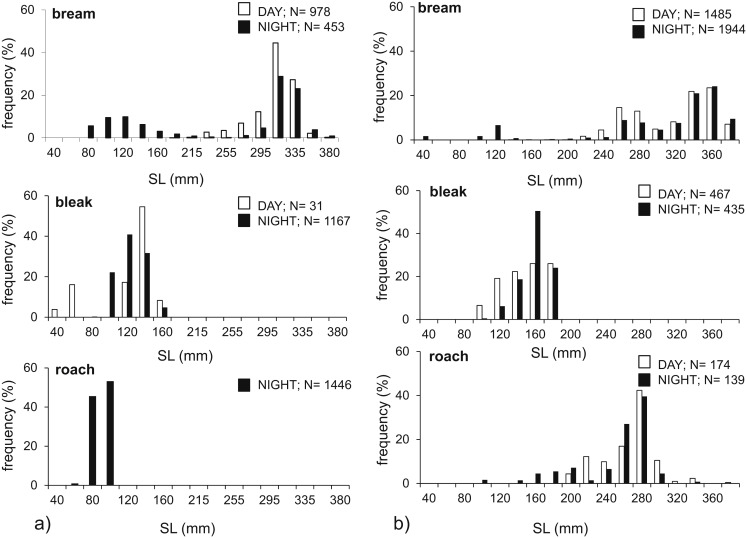This study addresses fish behaviour at the mouth of a midwater trawl in two temperate reservoirs. Fish distribution and behaviour were monitored using a SIMRAD EK60 (38 kHz) split-beam echosounder with the transducer deployed at the water surface, attached to the surface trawl headrope. We were able to describe day and night patterns of vertical distribution of fish in the reservoirs, describe fish behaviour near the footrope (i.e. vertical swimming velocity, fish tortuosity, vertical direction of swimming), and find the proportion of fish performing avoidance reactions. Significant differences were found between day and night distributions and behaviours. In total, only 35 of the 1514 acoustically recorded fish performed apparent avoidance behaviour. Twenty-seven avoidance reactions were observed in the day (6.3-% of total fish) while eight were observed at night (0.7-% of total fish). Fish were more active in the daytime, while tending to stay still in the water column with no observable reactions at night. We found significant dependence between the size of fish directly avoiding the trawl and their swimming velocities. The greatest echogram slope values belonged to those fish with a strong avoidance reaction. When the footrope was perceived, the fish reacted from approximately 1 m vertical distances and escaped up to 5 m below the footrope (usually 1–2.5 m). Light, water transparency and temperature stratification were the dominant factors influencing vertical distribution and fish avoidance behaviour.
Keywords: avoidance behaviour; fish tortuosity; open water; pair trawling; SED echogram; vertical swimming velocity; vertical track slope

